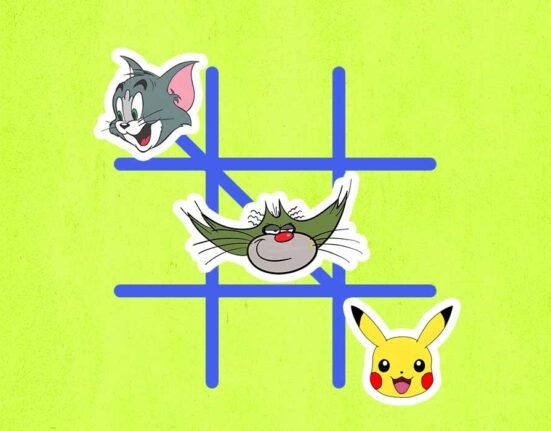We often feel a sense of familiarity and instant connection, even if we have met someone for the first time. It could be a total stranger, too. This is actually more psychologically baked than one might think. For example, if we go to a party and talk to someone for the first time, a total stranger, but feel almost immediately understood, as if we have known the person from before, this can feel like an instant connection even if it’s with a stranger. The feeling of hitting it off with someone, wanting to build a bond with them or just enjoying their company and conversation is all connected to science and some really interesting theories in psychology. This article thereby explains what strangers feel so familiar and the psychology of this instant connection.
Read More: The Comfort of Familiarity: Psychological Safety in Places from Our Past
How Our Subconscious Fuels Instant Attachment
We might have heard of the attachment theory that was first introduced by Mary Ainsworth and then built upon by John Bowlby. Now, attachment theory talks about various attachment styles primarily between children and their caregivers, which can later be found in relationships and other bonds too. There are several styles like the secure attachment style, anxious avoidant, insecure avoidant and many more(MSEd, 2025g).
Interestingly enough, even in the context of feeling that attachment when conversing or meeting a stranger for the first time, this attachment can be understood. Often, subconscious reminders like someone’s appearance, voice, mannerisms and the way they act and behave can make us feel like we know them to be familiar. They might remind us of someone we already know or have a deep and secure attachment with. This can lead to us feeling safer and seen by them, which leads to us feeling connected even with a stranger we might hardly know or just met(MSEd, 2025g).
This is how attachment and attachment styles play a major role when interacting with new people and sometimes even hitting it off with them on the right foot, merely because of attachment and known features like voice, appearance, mutual beliefs and interests and more. This can also be called as transference (Fritscher, 2023). Projecting feelings you have or have had for a person from the present or the past onto someone new, in simple words. The subconscious reminders, like physical appearance and overall behaviour, can only prompt this further.
Making Quick Assumptions and Judgements
As humans, we are quick to make assumptions about people and their personalities in just a few minutes or days of getting to know them. We can build upon this theory further by using the Implicit personality theory. The two main categories of this theory are the two ways in which people perceive others, strangers in this context. One being pre-held biases they have about systems, people and things, and secondly, individual differences and how they play a role in how much we like or dislike someone and what first impression we have of them(Simply Psychology, 2024b).
Even language, background and others can be biases that we hold. This plays a major role in how much interest we take in others and overall how much trust we put in them. If it is more than it leads to that instant click or connection. The similar they are to us in some cases, the more we like them and or trust them.
Socialising and Showcasing Social Identities
Socialisation is a part of all of our daily lives, and it plays a huge role in our self-concept, how we view others depending on various social cues taken, as well as how social identity in general is shaped. To begin with, let’s unpack the social exchange theory, which helps create the instant connection, warmth and validation one feels or wants to get when they are talking to a stranger.
The social exchange theory mainly revolves around a give-and-take. Where people in a relationship of any kind weigh the costs and benefits and their gains and losses and tread forth. However, when meeting someone new or a stranger, there are fewer expectations, less give and take and mostly hoping for a non-judgmental approach as well (MSEd, 2025i). This gives scope for better connection or that spark and leads to maybe feeling safer to open up to as well, again boosting that connection.

When one feels understood, validated and even heard, it can boost their self-concept, self-confidence as well(MSEd, 2024r). This instant connection with a stranger can actually accelerate the social identity and self-image and lead to positive outcomes too if the interaction feels warm, validating and understanding (Simply Psychology, 2023d). As mentioned before, more similarities between groups or people lead to an instant connection as compared to those with more differences or less validation at the first meeting or interaction.
Read More: 10 Daily Habits to Build Self-confidence
Thin Slicing and the Mene exposure effect
Thin-slicing is a shortcut of a kind. It is when we have a very small interaction with someone for as little as five minutes and can conclude them. It can be about their interests, goals, how they align with us or not and more. (Thompson, 2012) If this thin-slicing process helps us draw more positive conclusions about a person than negative ones, it can lead to a stranger connecting with even a stranger.
This leads to a last and final psychological reason for this article being the mere exposure effect. The more one is exposed to something, the more familiar they become with it. In this case, the more you see a person, it could even be a stranger at the gym or at work or at a park. The more familiar they get simply because of the mere exposure effect(MSEd, 2023a). This can lead to more familiarity and better connections, too.
Conclusion: Why Strangers Sometimes Feel Like Home
To conclude, this article sums up how various psychological reasons that now seem familiar are reasons why we can feel an instant connection with strangers and new people. The way we form our attachment styles can result into subconscious reminds like a stranger’s physical appearance, voice, mannerisms and more that leads to us feelings connect, this followed by the mere explode effect like seeing someone more often along with short conversations that help us thin slice conversations as well as combine implicit personalities into our perception of new people or strangers, validation, warmth and feeling understood, all in all even if by a stranger can make us feel safe, and feel that familiarity, connection and spark with someone.
Read More: Attachment Patterns Across Relational Contexts: A Psychological Overview
FAQs
1. How does frequency affect connection?
The more one is exposed to something, the more familiar they become with it. In this case, the more you see a person, it could even be a stranger at the gym or at work or at a park. The more familiar they get simply because of the mere exposure effect(MSEd, 2023a). This can lead to more familiarity and better connections, too.
2. How do attachments affect familiarity?
Interestingly enough, even in the context of feeling that attachment when conversing or meeting a stranger for the first time, this attachment can be understood. Often, subconscious reminders like someone’s appearance, voice, mannerisms and the way they act and behave can make us feel like we know them to be familiar. They might remind us of someone we already know or have a deep and secure attachment with. This can lead to us feeling safer and seen by them, which leads to us feeling connected even with a stranger we might hardly know or just met(MSEd, 2025g).
3. Why do short conversations feel better?
When we have a very small interaction with someone for as little as five minutes, and can conclude it. It can be about their interests, goals, how they align with us or not and more. (Thompson, 2012) If this thin-slicing process helps us draw more positive conclusions about a person than negative ones, it can lead to a stranger connecting with even a stranger.
4. Why does talking to a new person feel more comforting at times?
The social exchange theory is a give-and-take. Where people in a relationship of any kind weigh the costs and benefits and their gains and losses and tread forth. However, when meeting someone new or a stranger, there are fewer expectations, less give and take and mostly hoping for a non-judgmental approach as well (MSEd, 2025i). This gives scope for better connection or that spark and leads to maybe feeling safer to open up to as well, again boosting that connection.
References +
MSEd, K. C. (2025g, January 29). What is attachment theory? Verywell Mind. https://www.verywellmind.com/what-is-attachment-theory-2795337
Fritscher, L. (2023, December 19). What is transference, and how does it work? Verywell Mind. https://www.verywellmind.com/transference-2671660
Simply Psychology. (2024b, January 29). Implicit personality theory. https://www.simplypsychology.org/implicit-personality.html
MSEd, K. C. (2025i, July 3). Social exchange Theory and why we “Keep score” in relationships. Verywell Mind. https://www.verywellmind.com/what-is-social-exchange-theory-2795882
MSEd, K. C. (2024r, July 29). What is Self-Concept? Verywell Mind. https://www.verywellmind.com/what-is-self-concept-2795865
Simply Psychology. (2023d, October 5). Social Identity Theory In Psychology (Tajfel & Turner, 1979). https://www.simplypsychology.org/social-identity-theory.html
Thompson, J., PhD. (2012, March 24). Thin slices are not food, but still very important. Psychology Today. https://www.psychologytoday.com/us/blog/beyond-words/201203/thin-slices-first-impressions
MSEd, K. C. (2023a, March 17). Mere exposure effect: How familiarity breeds attraction. Verywell Mind. https://www.verywellmind.com/mere-exposure-effect-7368184













Leave feedback about this